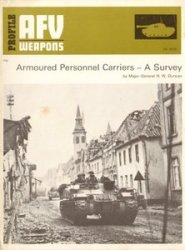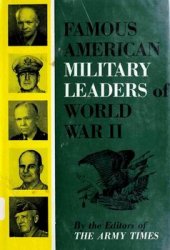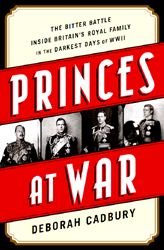The lordship became increasingly fragmented with great lords, Irish as well as Anglo-Irish, dominant in most of the island and effective administration by the Dublin government confined to a small number of disparate areas. This did not necessarily mean greater instability since the lords in the localities settled into new alliances that helped to maintain some kind of order. Evidence of new wealth can be seen in the patronage manifested in new ecclesiastical buildings and the foundation of new monastic communities. Trade, too, began to flourish.
From the English perspective, however, Ireland could still present a security problem. The fear that Ireland might be exploited by enemies of the crown was manifested in November 1401 when Owain Glyn D-wr of Wales attempted to engage the help of some Irish by appealing not only to their common hatred of the ‘Saxons’ but to common kinship as well. His letter came into the king’s hands and the danger was revealed. In June 1401 he had given Ireland to the charge of his son Thomas of Lancaster, with a grant of 12,000 marks per annum. But the English exchequer was unable to pay the stipend, and Thomas quickly ran out of cash, pawning personal valuables to raise money while troops deserted for lack of pay. Eventually arrears of money owed to Thomas reached a staggering ?18,000. Henry IV headed a pauper government and what little money was available was reserved for English, not Irish, needs. Frequently those who had accepted office in Ireland were kept waiting for money owed to them, sometimes never being paid.47 This not only severely restricted military operations in Lancastrian Ireland, it also made it difficult to attract the right men from England to serve there. With the continued growth of faction in Ireland, however, centred around the leading Anglo-Irish magnates such as the earls of Desmond, Ormond or Kildare, control of the office of chief governor and the patronage that went with it became increasingly important. The office conveyed power and enabled the holder to build up a network of support through patronage. The long rivalry between Talbot and Ormond factions in the first half of the fifteenth century shows how far the magnates were willing to go to secure control of office.48 Failure to recover some, or even all, of the expenses incurred in office was considered a small price to pay.
One way of cutting down the cost of maintaining armies was the exploitation of what became known as the system of coign and livery - quartering soldiers on the country and seizing supplies of food and whatever else was necessary to maintain them. In 1428 the archbishop of Armagh condemned this system, which had been exercised by ‘all the lieutenants that have been in this country’, so that ‘there is owing in this land by lieutenants and their soldiers within these few years ?20,000’.49 Although illegal, this system continued widely throughout the lordship despite the condemnation of the church and the king.
Alliances with Irish lords, sometimes through marriage, were also common among the great magnates in the struggle for power. Not only did this sometimes blur the distinction between Anglo-Irish and Irish and lead to a greater adoption of Irish ways by the ‘English of the land of Ireland’ (as they were still officially called), but it made officials in Dublin less important as a force in Irish politics. What were called the four ‘obedient’ shires of Dublin, Louth, Meath and Kildare had become the area in which the royal administration concentrated resources to maintain some measure of the rule of law. But as the fifteenth century wore on, even that became too large to be effectively controlled. A much smaller area around Dublin, called ‘the Pale’ later in the century, emerged as what would once have been called ‘the land of peace’. Even as early as 1435 parliament told the king that ‘enemies and rebels’ controlled most of the four obedient shires. What became the Pale, ‘scarcely thirty miles in length and twenty miles in breadth’, was the only area in which ‘man may surely ride and go, in the said counties, to answer the king’s writs and to his commandments’.50
Resentment of English-born officials continued. In 1441 the Irish council sent a request to the king that Anglo-Irish (or ‘Englishmen born in Ireland’) should have the same rights in England as Englishmen. Discrimination was rampant there. The determination of the Anglo-Irish to govern themselves was strengthened by this. They would not be bound by the legislation of any parliament, only their own, or answerable to any writs out of England. The classic expression of this was the famous declaration of the Irish parliament in 1460 that ‘Ireland is, and at all times has been, corporate of itself’ and so was ‘freed of the burden of any special law of the realm of England save only such laws as by the lords spiritual and temporal and commons of the said land had been in great council or parliament there held, admitted, accepted, affirmed and proclaimed, according to sundry ancient statutes thereof made’. Freedom from writs out of England was also enacted into Irish law.51
This legislation was enacted to protect Richard, duke of York, who had fled to Ireland after the failure of his rebellion in England. He had been appointed chief governor in 1447 and as earl of Ulster had important interests in the lordship. Those interests had been greatly disturbed by the struggle between the Butlers and the Geraldines.52 Like others before him York was soon in financial trouble. But he was determined not to fail - he said in a letter that ‘it shall never be chronicled nor remain in scripture, by the grace of God, that Ireland was lost by negligence’.53 He did enjoy success. The extent of his Irish family connection won him widespread support. As a result he found there a power base after he had to flee for his life from England in October 1459. Not only did parliament protect him from attainder in England, he was also able to plan the invasion of England in safety in Ireland and although he was killed in battle, the eventual success of the Yorkists saw his son crowned as Edward IV.
Ireland had played a key role in this. Backed by the Geraldines, the Yorkist success was a severe blow to the Butlers who had remained loyal to Lancaster. In 1462 a Butler rebellion against Edward IV was defeated by the Geraldines at the battle of Pilltown and the Butler estates were confiscated and later doled out to Desmond, Kildare and their supporters. This confirmed the Geraldine ascendancy and the end of Lancastrian hopes in Ireland, and Edward IV was not slow to show his gratitude. But the growing concentration of power in the hands of Desmond soon alarmed him and when he sent Tiptoft as chief governor in 1467 it was the beginning of an attempt to regain royal control in the lordship. In a parliament summoned to Drogheda both Desmond and Kildare were attained of treason and Desmond was executed on 5 February 1468. There was a huge reaction in Ireland. Kildare was rescued from prison, royal lands in Meath were devastated by a huge army of rebels and Irish lords joined the Geraldines. The disorder that followed was so widespread that the attainder against Kildare had to be reversed.
From now on it was the Kildares who were to be the real masters of Ireland. Attempts to control them proved ineffective. In 1478 Lord Grey was sent as chief governor and summoned a parliament to meet at Trim in November. But Kildare supporters garrisoned Dublin castle against him, refused him access to the great seal, and some sheriffs prevented elections to parliament. Kildare was restored to the chief governorship and his leading supporters were also reappointed to the most important offices in the administration. From now on the eighth earl of Kildare (‘the great earl’, as he is usually called) controlled the government and administration, with few interruptions, until his death in 1513, under no fewer than
Five kings.54
After his accession in 1483 Richard III did make a determined effort to regain control, and even to extend it, in Ireland. Kildare’s monopoly of government was to cease. But in 1485 parliament not only confirmed the Kildare supporters in office for life but gave the earl the right to replace them during a vacancy. Kildare also procured legislation which confirmed the mythical ‘statute of Henry Fitzempress’, supposedly enacted in the Irish parliament while Henry II was in Dublin, under which the Irish council, controlled of course by the earl, would fill any vacancy that might occur in the office of chief governor. Richard tried to woo supporters away from the earl and even attempted to gain the allegiance of the earl of Desmond. He even made the extraordinary admission to the earl that his father had been executed illegally and against all reason. But he had no time. He lost his crown in 1485 to the first of the Tudor monarchs, Henry VII.55
The new lord of Ireland alarmed Kildare and other supporters of the Yorkist cause in Ireland when he restored the earldom of Ormond to the Butlers, who had supported the house of Lancaster. This alienated many and when early in 1487 a young man, Lambert Simnel, was landed in Dublin, claiming to be the earl of Warwick, son of the duke of Clarence and rightful heir to the English throne, he won immediate support. Kildare housed him in Dublin castle and on 24 May, in a solemn ceremony in Christ Church cathedral, he was crowned king of England. Significantly his title also included the kingship of Ireland, giving support to Anglo-Irish aspirations for what in later centuries would be called ‘home rule’.56 That this was no charade was quickly made evident when 2,000 German mercenaries landed in Ireland in support of an invasion of England in June. Large numbers from Ireland, led by Kildare’s brother, joined the army. Henry VII was facing the threat of deposition and was lucky that victory at the battle of Stoke secured his throne. He could have no doubts now of the danger posed by Kildare in Ireland. When another pretender, Perkin Warbeck, arrived in Ireland in November 1491, Kildare and his supporters were removed from office. Worse, a hated rival, James Ormond, was made treasurer. Geraldines and Butlers fought, Kildare imprisoned the commander of the royal forces in Ireland and hanged his son. Henry VII had to move. Not only was military action called for, a reform of the administration was urgently required. The man charged with this was Edward Poynings. With him came some high officials to introduce the reforms already initiated by the new Tudor government in England.
By the summer of 1496 when the army in Ireland was paid off, it had cost the king more than ?18,000, the huge cost the best measure of the potential danger averted. Kildare could now be returned to office, with the king secure that no Yorkist plot or continental intrigue in Ireland could endanger him. But what was to make Poynings such a major figure in Irish history is the legislation known as Poynings’s law, which was enacted at the parliament he held in Drogheda late in 1494. No parliament could be held in Ireland in future without the king’s licence and before all bills had been approved by king and council in England. Altogether forty-nine statutes were enacted, including the confirmation of the Statutes of Kilkenny.57 Two famous statutes made all English legislation apply in Ireland and annulled what was called ‘the pretensed prescription’ of the 1460 parliament that had freed the lordship from writs under the king’s great seal. Henceforth, not only the great seal of England but the privy seal and the signet were to be effective in Ireland. Anglo-Irish relations and the government of Ireland could never return to the pattern developed in the fifteenth century. When Warbeck landed in Ireland again in 1497 he received no real support, not even from the most dedicated Yorkists. His capture and execution in England soon after finished the Yorkist threat.
Under the new circumstances prevailing Kildare could safely be returned to power. He grew in strength during the years that followed, receiving support from many of the greatest Irish as well as Anglo-Irish. Indeed, many paid for his protection. In 1504 the great battle of Knockdoe showed how wide was his support from all parts of Ireland. The power concentrated in his hands may have worried the king occasionally. But he now had in Ireland, at low cost to himself, the kind of peace and security that had proved impossible to achieve during most of the fifteenth century.
In 350 years Ireland had gone through a process of change that was to leave a permanent effect on the island. The English invasion had led to colonization by waves of settlers, the introduction of feudalism, the creation of manorial society and a new economy. A central and local government, with a system of justice based on English law, had been created. Parliament had been developed, leading for a time to a desire for what the early twentieth century called ‘home rule’. But the failure to conquer the whole island, and the survival of independent Irish lordships, resulted in efficient rule by central government being confined in the main to a small area in the east that became known as ‘the Pale’. The Tudor monarchs were faced with the problem of reconquest and eventual recolonization of areas brought under their control.




 World History
World History









